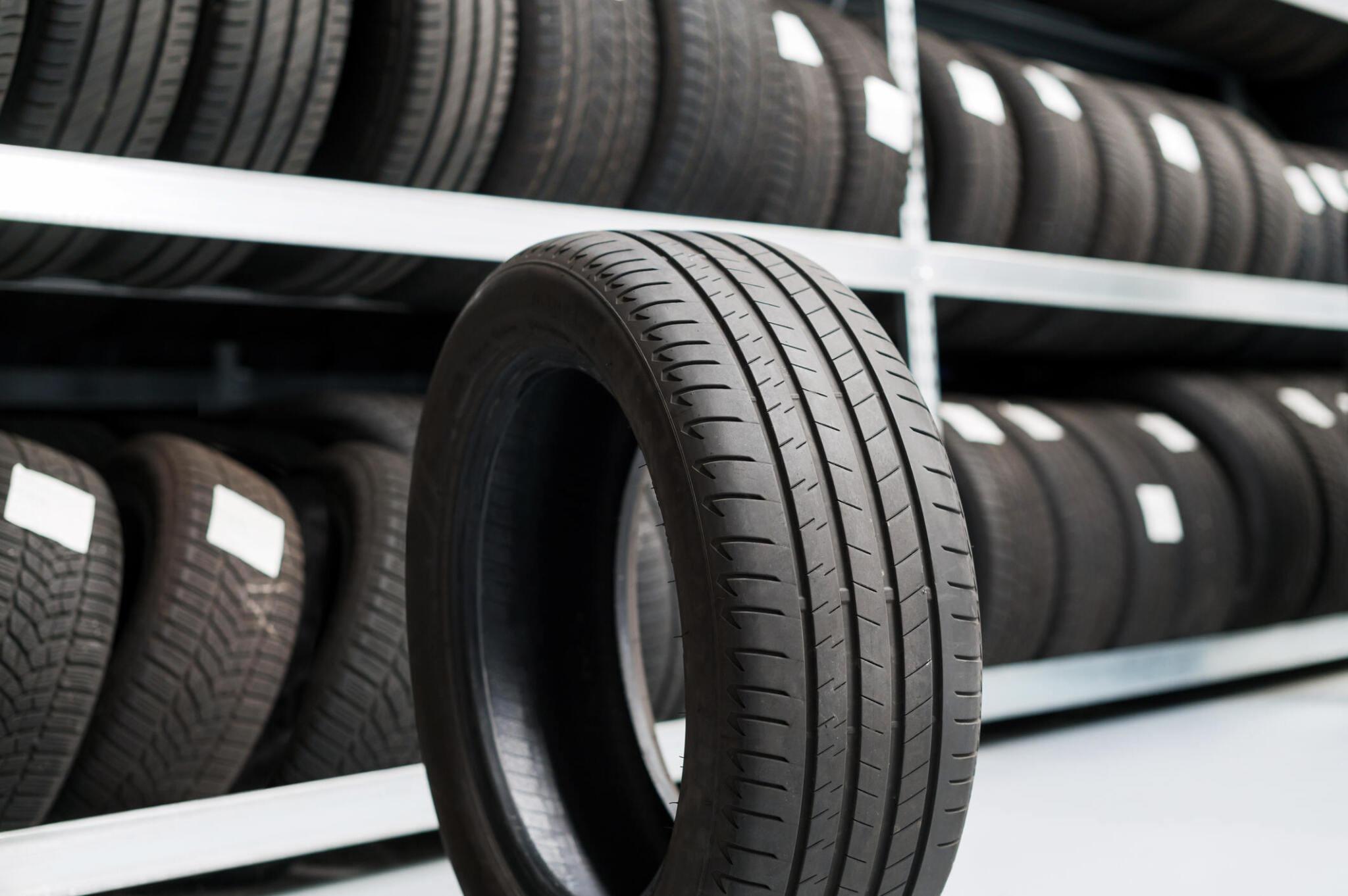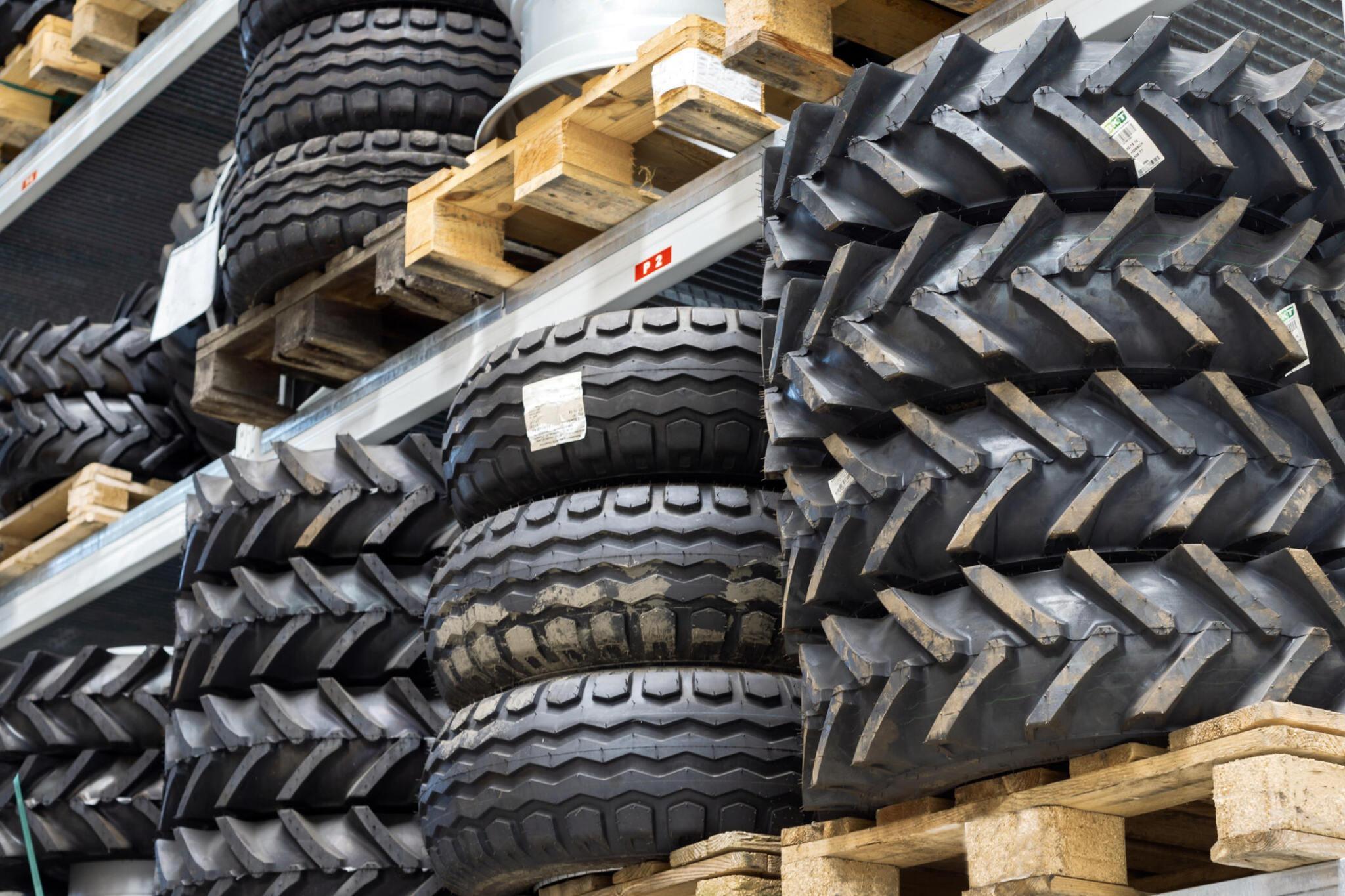Last Updated on 3 months
Understanding the Connection: Interest Rates and Market Behavior
Knowing how interest rates affect market behavior, especially in the tire industry, is essential to understanding economic dynamics. Central banks set interest rates to control economic growth and inflation. These rates directly affect consumer borrowing costs, including vehicle loans and credit lines for purchasing automotive parts like tires.
When interest rates rise, borrowing becomes more expensive, and consumers tend to reduce or delay their spending on non-essential goods. This can sometimes lead to delayed vehicle purchases and maintenance in the automotive industry, directly affecting tire sales.
On the other hand, lower interest rates can encourage people to spend more by making borrowing more affordable. This could increase tire sales, as more people may be inclined to buy and maintain cars.
The tire market can sometimes see changes in demand due to economic shifts and interest rate adjustments. Tire retailers and manufacturers can benefit from understanding these dynamics to make strategic plans, set prices, and manage inventory effectively.
Scope and Aim of This Analysis
This analysis explores the connection between rising interest rates and tire purchasing trends. Specifically, it seeks to:
- Examine the Basic Concepts of Interest Rates: This analysis will explain how interest rates work, what central banks do, and how these rates affect the economy as a whole and the auto industry in particular.
- Analyze the Tire Industry Overview: This analysis will provide an overview of the tire industry, including key players, market trends, and pricing strategies. This will examine how the industry has historically responded to economic changes and interest rate fluctuations.
- Investigate Consumer Behavior in Automotive Purchasing: This analysis will reveal the psychology behind tire buying and how economic indicators like interest rates influence consumer decisions. This includes examining spending patterns, consumer priorities, and the decision-making process regarding automotive maintenance and tire purchases.
- Explore the Direct Effects of Rising Interest Rates: This analysis will assess the impact of increased borrowing costs on automotive financing, tire retail, and wholesale markets. This analysis aims to provide concrete examples and case studies demonstrating how interest rate changes directly affect consumer behavior and market trends.
- Suggest Strategies for Market Adaptation: This analysis will provide helpful tips on how consumers can adapt to a high-interest rate environment and strategies for tire retailers and manufacturers to respond effectively to these market changes.
By addressing these points, you can understand how interest rates influence consumer behavior, specifically tire purchasing trends. This information is essential for the tire industry, including manufacturers, retailers, and consumers. It will help them make intelligent choices in a changing economy.
The Mechanics of Interest Rates
Interest rates are a fundamental element in the world’s financial systems, acting as a tool to control monetary flow, inflation, and economic stability. Interest rates are the amount you have to pay when you borrow money. They significantly impact everything, from personal loans to the overall economy. This affects how much money people have to spend and the choices businesses make about investing.
In the tire industry, interest rates can directly impact consumer behavior. Higher rates mean increased borrowing costs, potentially leading consumers to delay purchases like new tires or vehicle maintenance. On the other hand, lower rates can encourage spending due to cheaper credit, positively impacting tire sales.
The Role of Central Banks and Economic Policy
Central banks, such as the Federal Reserve in the United States or the European Central Bank in the Eurozone, play an essential role in setting these interest rates. They use monetary policy tools to manage economic growth and control inflation. Central banks have the power to influence the amount of money in the economy by making adjustments to interest rates.
When the economy becomes overheated, with high inflation and rapid growth, central banks may decide to raise interest rates to help manage the situation. This action aims to encourage responsible spending and borrowing by raising the cost of credit.
On the other hand, central banks often reduce interest rates when the economy is struggling to encourage people to borrow and spend more. This is done to boost economic growth.
Historical Trends and Current Scenarios
Historical trends show that interest rates have significantly fluctuated, influenced by global and local economic events. For instance, in the late 20th and early 21st centuries, there were periods of both high and low interest rates.
During the 1980s, interest rates were exceptionally high due to the significant rise in inflation. On the other hand, after the financial crisis of 2008, interest rates have been historically low to stimulate economic recovery.
The current economic situation also has a significant impact. Over the past few years, central banks worldwide have faced the difficult task of managing economic growth and controlling inflation.
This has been particularly challenging due to global pandemics, geopolitical tensions, and rapid technological advancements. These factors contribute to the current interest rate policies, directly or indirectly impacting industries like tire manufacturing and sales.
Examining these mechanics makes it easy to understand how fluctuations in interest rates affect consumer behavior, business investment, and overall economic health. For businesses in the tire industry, this knowledge is essential for strategic planning, pricing, and anticipating market demand under varying economic conditions.

The Tire Market Landscape
The tire industry plays a significant role in the global automotive sector and is constantly changing. It involves many products, from standard passenger vehicle tires to specialized tires for trucks, agricultural machinery, and industrial vehicles. Various factors, including vehicle sales, technological advancements, and the demand for replacement tires, drive the industry’s growth.
One of the great things about the tire industry is its global span. It significantly impacts international trade policies, raw material availability, and the global economic climate. Tire manufacturing relies on certain raw materials such as rubber, steel, and chemicals, which can be affected by changes in the prices of these commodities.
Key Market Players and Trends
The tire industry is marked by several key players, both established and emerging. Companies like Michelin, Goodyear, Bridgestone, and Continental have a significant market share among the industry’s giants. These companies dominate sales, technological advancements, and global distribution networks.
One of the emerging trends in the tire industry is the growing popularity of eco-friendly tires. These tires are specially designed to help you save on fuel and reduce carbon emissions. Additionally, the tire industry is influenced by exciting developments in tire technology, such as airless tires and innovative tire features.
The growing love for electric vehicles (EVs) has brought about some exciting changes in tire designs. EVs require tires capable of handling the increased torque they generate while offering improved rolling resistance.
Pricing Strategies in the Tire Industry
A few things can affect the prices of tires in the industry, such as manufacturing costs, brand value, and market competition. Raw material costs are significant because the price of rubber or steel can directly affect how much it costs to make things. Research and development (R&D) for new tire technologies can sometimes lead to higher prices.
Manufacturers and retailers use different pricing strategies. Premium brands often price their products higher, reflecting their reputation for quality and durability. On the other hand, budget brands provide wallet-friendly choices that are perfect for those mindful of their expenses.
Another factor that affects tire pricing is the increasing popularity of online shopping for automotive parts. Online retailers like Giga Tires are great because they offer competitive pricing and a wide selection. This has a positive impact on how traditional brick-and-mortar retailers price their products.
Traditional manufacturing practices and emerging trends shape the landscape of the tire industry. Everyone in this sector must understand the dynamics of market players, technological advancements, and pricing strategies, whether you’re a manufacturer, retailer, or consumer.
Economic Factors Affecting the Automotive Industry
The automotive industry is strongly connected to economic forces shaping its operations and influencing production and consumer behavior. Let’s explore how economic factors can significantly impact the automotive industry’s production, sales, and innovation.
Understanding the Impact of Inflation and Rising Interest Rates
Inflation and rising interest rates can significantly affect individuals, businesses, and the overall economy, so exploring their consequences and strategies for navigating the financial terrain is essential. Here are some things to know:
- Inflation’s Effect on Consumer Purchasing: Inflation can impact consumer purchasing power, which can affect demand and the affordability of vehicles.
- Interest Rate Hikes on Borrowing Costs: When interest rates go up, it can affect both dealerships and consumers. Dealerships may find it harder to profit, and consumers may have fewer financing options.
- Necessity for Stakeholder Adaptation: Industry stakeholders must recognize these economic shifts to adjust and respond best.
Adapting Financing Strategies to Economic Shifts
Adapting financing strategies to economic shifts is a fundamental aspect of financial resilience. As economic conditions fluctuate, individuals and businesses must remain agile and proactive in adjusting their financial approaches to thrive in changing times. Here are some financial strategies that can help:
- Customization of Financing Options: It’s essential to create financing strategies that can quickly adapt to the changing needs of dealerships, especially with inflation and interest rates being a concern.
- Tailored Solutions: Offering extended loan terms, adjustable interest rates, and innovative repayment structures helps dealerships manage their inventory while ensuring customers can afford their purchases.
Fostering Strong Relationships with Dealerships
Fostering strong relationships with dealerships goes beyond transactional interactions. It’s about cultivating partnerships built on trust and mutual benefit. These relationships can provide valuable insights and opportunities in the automotive industry. You can foster these relationships by:
- Building Trust: The key to successful partnerships is having open and transparent communication, which helps build trust and understanding.
- Collaborative Approach: To build strong relationships with dealerships, you must be proactive, listen to their problems, and make sure your strategies are aligned to help them meaningfully.
Proactive Risk Management Amidst Economic Uncertainty
Proactive risk management amidst economic uncertainty is a crucial strategy for safeguarding assets and investments. Anticipating and mitigating risks can help individuals and businesses weather economic storms and emerge stronger. Here is to stand firm during economic uncertainty:
- Risk Assessment: The significance of dealerships’ financial evaluations, comprehensive due diligence, and robust risk assessment frameworks cannot be overstated.
- Mitigating Risks: It’s important to spot early warning signs and take the right actions to safeguard your investments and keep your finances stable.
Seizing Opportunities for Innovation and Growth in a Dynamic Market
Seizing opportunities for innovation and growth in a dynamic market is essential for staying competitive. Here is how you can do so:
- Embracing Technology: Taking advantage of technological advancements and data analytics can transform risk assessment processes, improving efficiency and decision-making.
- Competitive Advantage: By embracing new and innovative technologies, businesses can boost their efficiency and stay one step ahead.
Navigating Economic Challenges in the Automotive Industry
Navigating economic challenges in the automotive industry requires a keen understanding of market forces and industry trends. Here are ways you can navigate these challenges:
- A Proactive and Adaptive Approach: Dealing with inflation and rising interest rates can be pretty complex, but it’s essential to approach it with a dynamic and forward-thinking strategy.
- Collaborative Efforts for Success: Current floorplan funders and automotive industry professionals must work together, embracing the challenges and opportunities of the current economic landscape.
- Path to Sustainable Growth: The automotive industry can deal with these economic factors and achieve sustainable growth by using customized financing plans, building strong relationships with dealers, managing risks well, and making technological advances.

Consumer Behavior in Automotive Purchasing
The automotive industry is a significant sector that involves various activities, including designing, manufacturing, marketing, and repairing motor vehicles. It is considered one of the largest industries globally in terms of revenue.
The industry’s contribution to the national revenue varies greatly, with some countries like France seeing a 16% contribution, while others like Slovakia have a higher contribution of 40%.
The term originates from the Greek word ‘autos’ (meaning self) and the Latin word ‘motivus’ (about motion), which means self-powered vehicles. This term was first used in automobiles in 1898, as proposed by Elmer Sperry.
Factors Affecting Automotive Purchases
Different factors can affect how people make decisions when buying a car. These factors can range from personal preferences to the overall state of the economy. An individual’s financial situation is significant in determining whether they can afford a vehicle and maintain its maintenance, like buying new tires.
How people perceive a brand is essential because consumers tend to have preferences based on the brand’s reputation, reliability, and past experiences.
Technological advancements and features of vehicles can sway consumer decisions. Buyers nowadays consider eco-friendly and advanced safety features when they make their purchases. Social factors such as family size, lifestyle, and environmental concerns also impact the type and frequency of automotive purchases.
The Psychology Behind Tire Buying
The decision-making process behind tire buying involves practicality, safety concerns, and value for money. Consumers often prioritize safety and durability when selecting tires, as these are important for their vehicle’s performance and safety. Brand trust plays a key role here; well-known brands are often perceived as more reliable.
Marketing and promotions can influence tire buying decisions. Consumers love a good deal or discount. It entices them to buy something sooner than planned or opt for a higher-end product with a great offer. The convenience and wide range of choices offered by online platforms like Giga Tires make purchasing more accessible for consumers.
Impact of Economic Indicators on Consumer Choices
Economic indicators such as inflation, interest, and employment rates affect how people buy cars. During economic prosperity, people are more inclined to invest in new vehicles and tires.
On the other hand, during economic downturns, people often choose to keep their vehicles and tires longer, which means there’s a growing market for affordable used cars and budget-friendly tire choices.
Interest rates affect the financing options for buying a car. Higher rates can make people less likely to borrow money to buy a new vehicle, indirectly affecting the tire market. The money people spend and the cost of living also affect how much they’re willing to invest in their car needs.
Understanding the nature of consumer behavior in automotive purchasing is necessary for stakeholders in the tire industry. Various factors, including financial situations, psychological factors, and broader economic indicators, influence consumer trends and preferences in the tire market. Recognizing these factors allows companies like Giga Tires to tailor their offerings and marketing strategies effectively to meet consumer needs and preferences.
Impact of Inflation and Higher Interest Rates
As the economy changes, American car buyers may encounter double inflation challenges and higher interest rates. These two critical factors can impact how people approach buying a new car.
Let’s explore the relationship between inflation and rising interest rates and how they impact American consumers’ choices when buying cars.
- Federal Reserve’s Strategy Against Inflation: Increasing interest rates to control inflation makes it harder for many Americans to afford vehicles.
- Adjustment in Buyer Expectations: Due to the rate increase, buyers are leaning towards used vehicles or taking care of their current ones instead of buying new ones.
- Effect on Lower-Income Consumers: According to Cox Automotive’s data insights, consumers with credit scores below 620 are most affected.
- Used Vehicle Prices as Inflation Indicators: Since early last year, there has been a noticeable increase in used vehicle prices, which has caught the attention of the Biden administration as an essential indicator of inflation. The recent rise in the consumer price index can be attributed to a few factors, such as higher costs for housing, used vehicles, and gasoline.
- Vehicle Prices Escalating Due to Supply Issues: The increase in vehicle prices, whether new or used, can be traced back to some factors. Since 2020, there have been some supply constraints due to factory shutdowns caused by the pandemic. On top of that, ongoing disruptions in the supply chain have also played a role.
The Financial Strain of High Prices and Interest Rates
The financial strain caused by high prices and interest rates can significantly impact individuals and businesses alike. It’s essential to recognize the challenges of rising costs and borrowing expenses and explore practical strategies for managing these financial pressures.
- A ‘Double Whammy’ Situation: According to Chris Frey from Cox Automotive, the current situation is a mix of higher prices and growing interest rates, which may result in higher monthly payments.
- Impact on Monthly Payments: For a typical subprime auto loan at 17.9% interest, the monthly payment for a $43,200 loan would be around $983. In contrast, a buyer with a top credit score at a 6.2% rate would pay about $720 monthly.
- Long-term High Price Expectations: Even if the Federal Reserve changes interest rates in the future, vehicle prices are expected to stay high. This is because it will take time to replenish inventories and for new vehicles to become available in the used market.
- Advice for Consumers: It’s a good idea for consumers, especially those with lower income or credit challenges, to be patient as prices are expected to remain high.
Understanding Buyer Behavior: Customer vs. Consumer
Understanding buyer behavior, particularly the distinction between customers and consumers, is essential for businesses aiming to tailor their marketing and product strategies effectively. While customers make purchasing decisions, consumers are the end users of a product or service. You can understand buyer behavior by considering the following things:
- Distinction Between ‘Customer’ and ‘Consumer’: These terms are often used interchangeably but have different meanings. A consumer is a potential firm customer, while a customer already consumes the goods a specific firm produces.
- Example to Illustrate the Difference: Regular purchasers from Footlocker are customers of Footlocker, while people who don’t shop there but might do so are also considered customers.
- Targeting Strategies: Businesses often use different strategies to target existing and potential customers.

Direct Effects of Rising Interest Rates
When interest rates increase, they significantly affect the auto industry, especially in financing. Higher rates make it more expensive to borrow money, making it harder for people to buy new cars. When auto loans become more expensive, the size of loans consumers are willing or able to take or the total number of loans issued is reduced.
For the automotive industry, this can result in less sales. When financing costs increase, people may decide to put off buying a new car or choose less expensive models. This change in how people buy things can affect manufacturers and dealerships, forcing them to change how they sell things and maybe offer better prices or financing options to keep sales going.
Impact on Tire Retail and Wholesale Markets
The tire retail and wholesale markets are not immune to the effects of rising interest rates. As vehicle ownership costs increase, people might put off or reduce spending on vehicle maintenance, like buying new tires. This change in consumer behavior can decrease tire sales, affecting retailers and wholesalers.
On the supply side, higher interest rates can increase the cost of inventory financing for tire retailers and wholesalers. When financing inventory costs increase, it can result in lower stock levels, fewer options available to consumers, and potentially higher prices to cover the increased costs.
Smaller retailers might be particularly vulnerable to these changes, as they may have less financial flexibility than larger chains or manufacturers.
Case Studies: Consumer Responses to Economic Shifts
Analyzing case studies of how consumers respond to economic shifts provides helpful insights into how rising interest rates directly impact them. For example, when interest rates increase, people tend to lean towards buying used cars, which can indirectly influence the tire market. Used vehicles may require tire replacement sooner than new cars, potentially increasing demand in the tire replacement market.
Another notable trend is the increased interest in budget-friendly tire options. Consumers who want to reduce expenses might opt for less expensive tires or delay replacing tires for as long as possible. This behavior can impact the product mix that retailers and wholesalers need to offer, with an increased focus on economical options.
Rising interest rates affect the automotive sector, particularly in financing and tire sales. The ripple effects are seen across the industry, from changes in consumer purchasing decisions to the financial strategies of retailers and wholesalers.
Understanding these impacts is essential for businesses in the tire industry, like Giga Tires, to adapt their strategies and offerings to align with changing market conditions and consumer needs.
Strategies for Market Adaptation
Adapting to market changes, especially in a high-interest rate environment, is essential for consumers and businesses. The ability to navigate these shifts can determine the success and sustainability of tire retailers, manufacturers, and consumer satisfaction.
Consumer Strategies in a High-Interest Rate Environment
Consumers facing a high-interest rate environment must adopt good strategies to manage their automotive and tire-related expenses effectively. One critical approach is prioritizing maintenance to extend the life of their current tires, thereby delaying new purchases. Consumers can also seek more cost-effective tire options, balancing quality and price to find the best value for their needs.
Another strategy involves taking advantage of promotions and discounts. Retailers often offer special deals, which can provide significant savings. Additionally, consumers can explore alternative purchasing channels, such as online retailers like Giga Tires, which might offer competitive pricing compared to traditional brick-and-mortar stores.
How Tire Retailers and Manufacturers Can Respond
For tire retailers and manufacturers, adapting to a high-interest rate environment requires a multifaceted approach. Offering a range of products that cater to varying consumer budgets can help capture a broader market segment. This could include introducing more budget-friendly tire options without compromising safety and quality.
Enhancing customer service and experience is another helpful strategy. In challenging economic times, consumers value transparency, knowledgeable assistance, and excellent service, which can decide where they purchase.
Retailers and manufacturers should also leverage digital platforms for marketing and sales. An online presence is not just about e-commerce; it’s also about providing information, reviews, and comparisons that help consumers make informed decisions.
Predictive Analysis: Future Market Trends
Predictive analysis is necessary for understanding and preparing for future market trends. By analyzing current economic indicators, consumer behavior patterns, and technological advancements, businesses in the tire industry can anticipate changes and adapt accordingly.
- One trend that is likely to continue is the growth of the online tire market. With the convenience and wide selection available online, more consumers are expected to shift towards buying tires through digital channels.
- Sustainability and eco-friendliness are also becoming increasingly important. As consumers become more environmentally conscious, the demand for eco-friendly tires is expected to grow. This shift allows manufacturers to innovate and retailers to expand their product offerings in this segment.
Adapting to market changes in a high-interest rate environment involves strategic planning, understanding consumers, and embracing technological advancements. For businesses like Giga Tires, staying ahead of these trends and adapting to changing consumer needs is essential for continued success in the competitive tire industry.
Conclusion & Recommendations
The relationship between interest rates and tire purchasing is significant. As we’ve explored, when interest rates increase, it usually means that borrowing money becomes more expensive. This can sometimes cause people to hold off on buying things they don’t need, like cars or car maintenance. This trend directly impacts the tire industry, which could decrease both new tire sales and replacement tire purchases.
However, it’s not just about reduced sales; how consumers make choices also tends to change. In situations where interest rates are higher, people tend to make more budget-friendly choices when buying tires. This affects the types of tires they choose and how often they buy them.
Strategic Insights for Stakeholders
Stakeholders in the tire industry need to understand and adapt to these economic shifts. Retailers and manufacturers should strive to be agile, adapting their strategies to match consumer behavior better. This might involve diversifying product offerings to include more affordable options or enhancing marketing efforts to emphasize the value and longevity of their products.
Moreover, embracing digital transformation and online retail can provide a competitive edge. An effective online presence can help reach a broader customer base, offering convenience and competitive pricing, which is especially appealing in a market where consumers are more cost-conscious.
Looking Ahead: Preparing for Economic Fluctuations
Getting ready for future economic fluctuations is all about being proactive. This involves closely monitoring economic indicators and consumer trends to predict market changes.
Businesses need a flexible business model that adapts easily to changing economic conditions. This flexibility could involve having a diverse range of products, providing flexible pricing options, and building solid relationships with customers to encourage them to return and refer others.
Diversifying your products and services can help protect against economic downturns. For instance, services like tire alignment, balancing, and rotation can attract customers, even if they aren’t looking to buy new tires.
Why Giga Tires
While the tire industry faces challenges with fluctuating interest rates, there are plenty of opportunities for adaptation and growth. Stakeholders who are well-prepared and responsive to changing market dynamics have a great chance of successfully navigating these challenges.
For those looking to purchase tires, whether for personal or commercial use, Giga Tires offers a comprehensive selection to meet all your needs. With a focus on quality, affordability, and customer service, Giga Tires can provide you with the best tire options, regardless of economic condition.
Explore Our Collection at Giga Tires
Your one-stop shop for all your tire needs. Whether you’re looking for durability, performance, or value, our extensive range ensures you’ll find the perfect fit for your vehicle. Don’t let economic fluctuations disrupt your journey. Choose Giga Tires for quality, reliability, and excellent service.
FAQs
What Difficulties Does the Tire Industry Face?
The tire industry faces challenges like fluctuating raw material prices, strict environmental regulations, and tough global competition. Additionally, adapting to rapidly evolving technology and shifting consumer preferences requires constant innovation and flexibility.
What Are the Current Global Trends in the Tire Market?
The global tire market is shifting towards eco-friendly and sustainable tire production, with increased demand for high-performance tires and a growing focus on leveraging online sales channels and digital marketing strategies.
Who Are the Various Consumers in the Tire Industry?
The tire industry caters to a wide range of consumers, including individual car owners seeking replacement tires, commercial fleets requiring durable tires for heavy vehicles, and industries that need specialized tires for specific machinery.
What Motivates Consumers to Purchase Tires?
Consumers are motivated to buy tires by the need for safety, vehicle performance, and compliance with legal tire standards. Factors like tire wear, seasonal changes, and advancements in tire technology also influence purchasing decisions.
How Do Consumers Typically Behave When Purchasing Tires?
When purchasing tires, consumers often exhibit behaviors focused on research and comparison, considering factors such as brand reputation, price, durability, and specific tire features suited to their driving needs and conditions.
Is There a Significant Impact of Using High-Quality Tires?
High-quality tires significantly impact safety, fuel efficiency, vehicle performance, and driving comfort. They are typically more durable, offer better traction and handling, and can lead to overall cost savings in the long run.
Can You Describe the Four Distinct Patterns of Buying Behavior?
The four main types of buying behavior are complex buying behavior, dissonance-reducing buying behavior, habitual buying behavior, and variety-seeking behavior, each varying based on consumer involvement and product differentiation.
How Do Shoppers Typically Behave in a Retail Setting?
In a retail setting, shoppers’ behavior can range from extensively researching and comparing products to making impulse purchases. Factors influencing this behavior include store layout, promotions, personal preferences, and the overall shopping experience.
What Defines the Buying Behavior of Consumers?
Consumer buying behavior is defined by how individuals search for, select, purchase, use, and dispose of goods and services, influenced by psychological, social, cultural, and personal factors.












